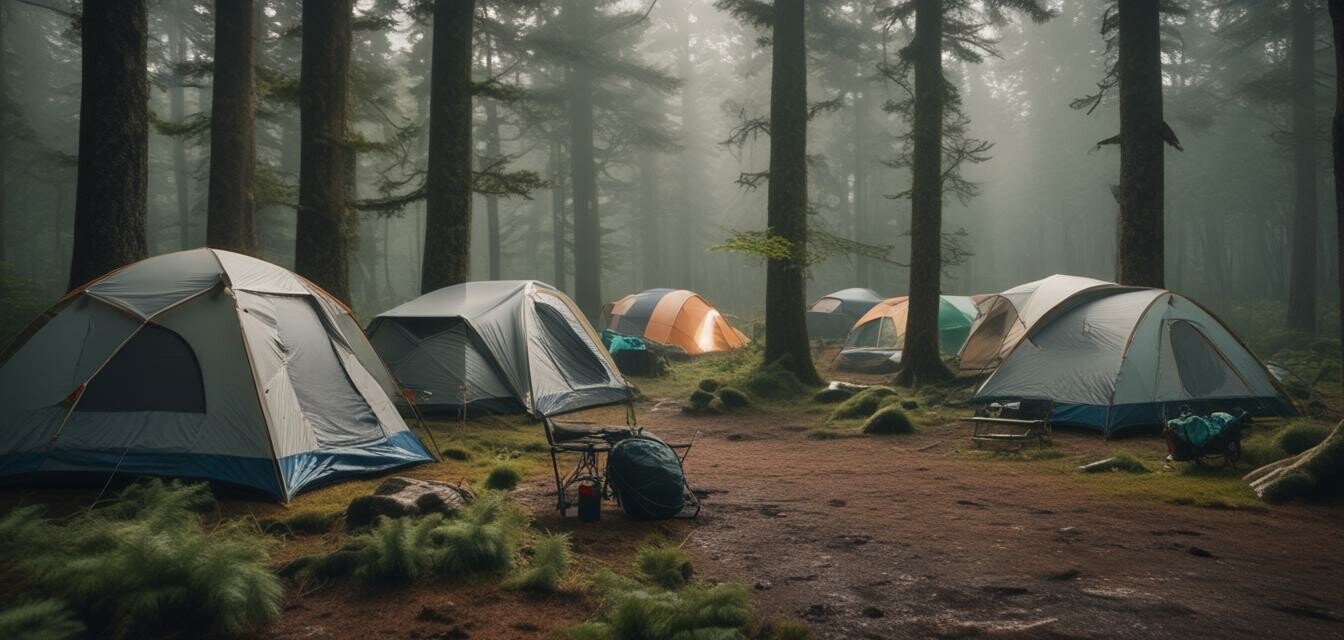
Solar Gear for Wet Weather: What You Need to Know
- Understanding how to protect solar gear from moisture.
- Tips for setting up solar equipment in wet conditions.
- Essential gear for wet weather camping.
- Maintenance practices to prolong your solar gear’s life.
Adventuring into the great outdoors can be immensely fulfilling, but sometimes the weather throws a wrench in your plans, especially when it comes to using solar-powered gear. Rain and humidity are significant challenges for campers that depend on solar technology for their energy needs. This article aims to equip you with tips and tricks for using your solar gear effectively in wet weather conditions. Whether you are a seasoned camper or a newbie, knowing how to deal with wet environments will ensure that you get the most out of your solar-powered camping gear.
1. The impact of wet weather on solar gear
Wet weather can pose a real threat to the functionality of your solar gear. Understanding these impacts will help you prepare and adapt your strategies accordingly.
| Weather Condition | Impact on Solar Gear |
|---|---|
| Rain | Can hinder sun exposure and create risks of water entering electrical components. |
| Humidity | Can affect battery performance and lead to condensation issues. |
| Cold temperatures | Can reduce battery efficiency and operational capacity. |
2. Protecting your solar gear
The first line of defense against wet weather is proper protection. Here are some strategies for safeguarding your solar gear:
- Use waterproof covers: Drape waterproof tarps over solar panels when it rains.
- Seal connections: Ensure all electrical connections are water-resistant.
- Choose quality gear: Invest in equipment that's designed for durability in adverse conditions.
- Store properly: When not in use, keep your solar gear in waterproof bags or containers.
Sealing connections effectively
Utilizing heat shrink tubing and silicone sealant can help ensure your connections remain safe from moisture. This simple technique can greatly extend the life of your equipment.
3. Setting up solar equipment in wet conditions
Even in wet weather, it’s essential to learn how to set up your solar gear for optimal performance. Here are some expert tips:
- Place solar panels at a slight angle to encourage water runoff.
- Aim for sheltered spots away from direct rainfall.
- Adjust the angle of your panels based on the sun's position behind overcast skies.
- Monitor equipment closely to diagnose any dampness issues early.
4. Essential gear for wet weather camping
Equipping yourself with the right tools can make all the difference when camping in wet weather. Consider the following accessories:
| Type | Recommended Features |
|---|---|
| Solar camping tents | Waterproof materials, sealed seams, and ample ventilation. |
| Solar lanterns | Water-resistant casing and adaptive brightness settings. |
| Portable solar panels | Rigid structure to maintain stability during wind and rain. |
Finding solar-powered camping gear that emphasizes durability and water resistance is crucial to ensuring its effective use in wet weather. For more details on choosing the right solar camping tents, head to our Buying Guides section.
5. Maintenance practices in wet weather
Regular maintenance is vital to keeping your solar-powered gear functional. Here are some simple practices adapted for wet weather:
- Dry your equipment: After any wet outing, ensure all gear is thoroughly dried before storage.
- Inspect regularly: Check for signs of corrosion or water damage, particularly around connections.
- Store securely: Use waterproof storage solutions to protect items from humidity.
Monitoring battery health
Wet conditions can be hard on batteries. Regularly check charge levels and connecting points to prevent issues related to moisture accumulation.
Conclusion
Wet weather does not have to mean the end of your solar-powered camping adventure. By using the strategies and tips outlined in this article, you can safely and effectively use your solar gear even in less-than-ideal conditions. Remember to prioritize protection, choose quality gear, and maintain your equipment diligently. Adventure awaits—rain or shine!
Pros
- Ensures reliability of power source in wet conditions.
- Increases longevity of solar gear through proper care.
- Enhances overall camping experience with less hassle.
Cons
- May require additional gear for protection.
- Performance can still be affected by prolonged exposure to heavy rain.